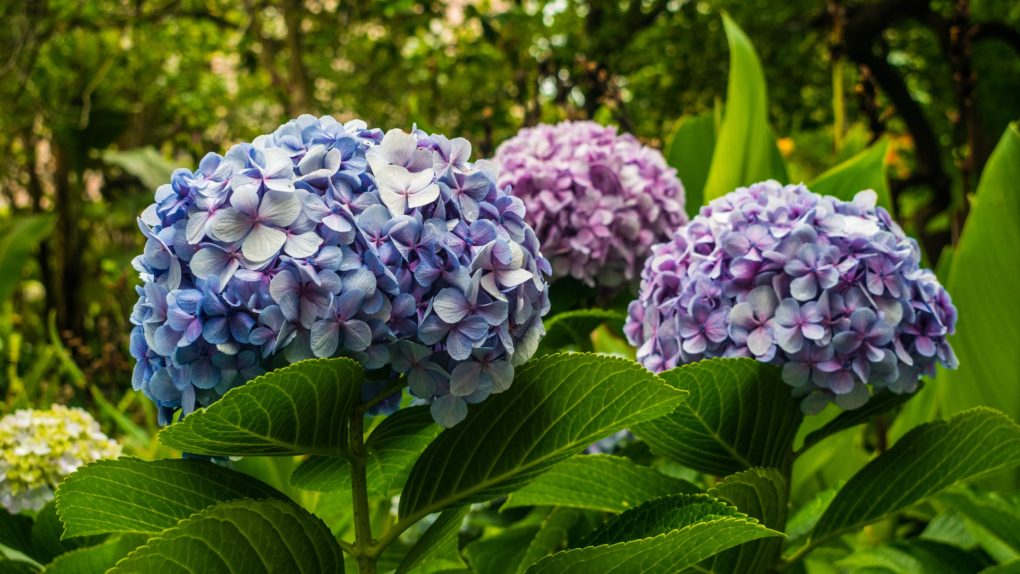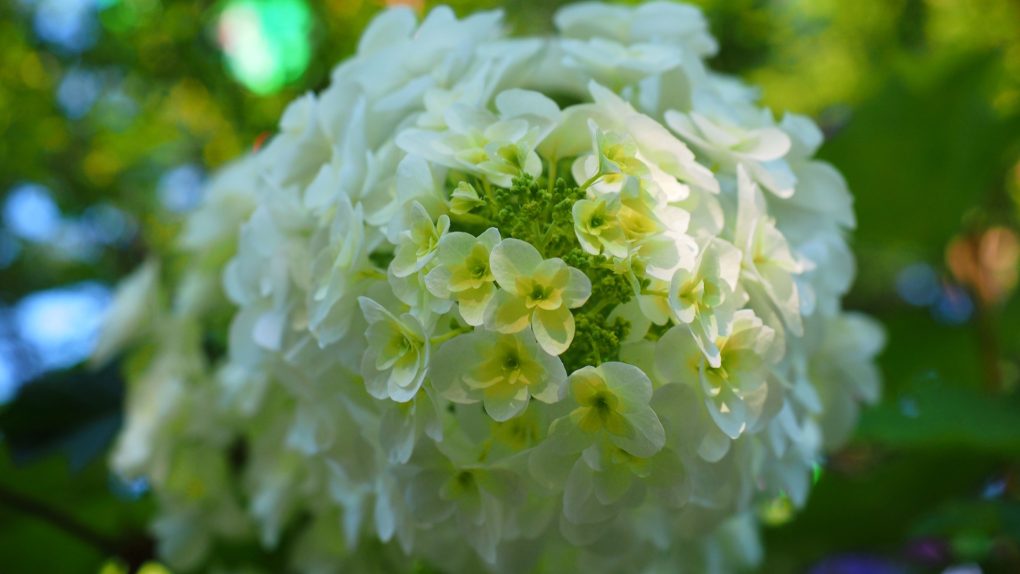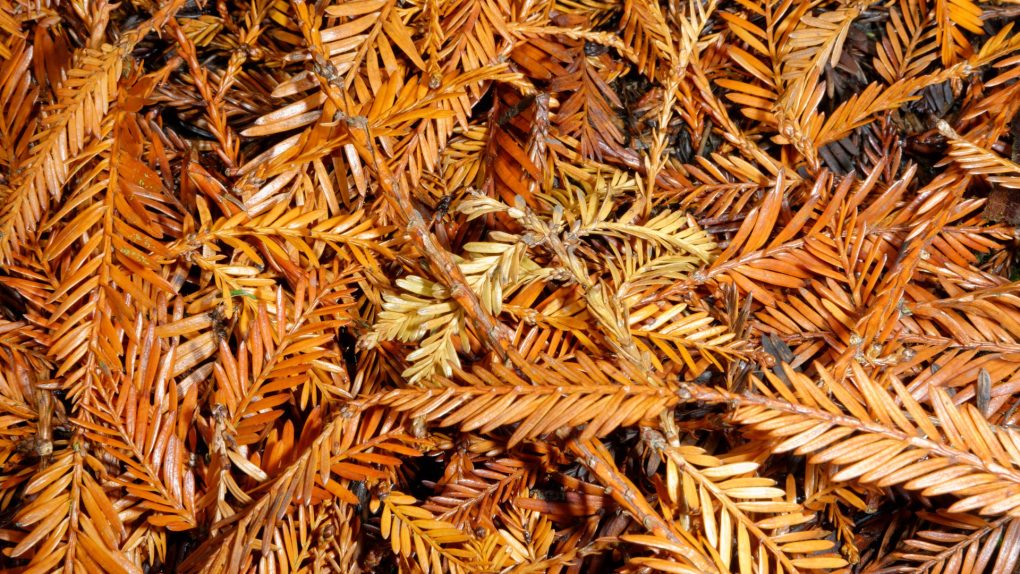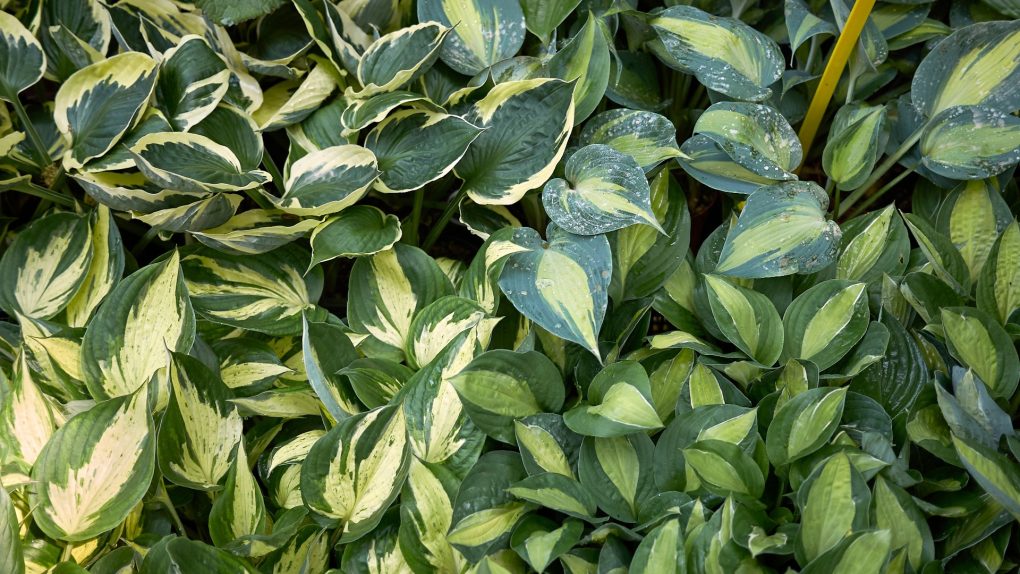Do Hydrangeas Grow Under Redwood Trees? Exploring Plant Compatibility in Shaded Environments
Hydrangeas are known for their large, showy blooms, which come in a range of colors from white and pink to blue and purple. They are typically grown in well-drained soil with plenty of organic matter, and they prefer partial shade to full sun. While hydrangeas can grow under redwoods, they may not bloom as well as in other locations due to the reduced sunlight and competition for resources.

Hydrangeas can grow under redwood trees. Hydrangeas and redwood trees share some optimal growing conditions so that the plants can coexist in a complementary manner.
The redwood trees provide partial shade, which hydrangeas need to thrive, and their roots generally don’t disturb hydrangea root space. However, proper care must still be taken to ensure the hydrangeas receive adequate sunlight, nutrients, and moisture. Planting your hydrangeas in high-quality soil and regularly amending it with organic materials like compost will encourage healthy growth for the hydrangea and redwood tree.
Gardeners interested in growing hydrangeas under redwoods should choose varieties well-suited to the growing conditions. Some hydrangeas, such as the oakleaf hydrangea and the climbing hydrangea, are more tolerant of shade and can handle competition from tree roots. Others, such as the bigleaf hydrangea, may struggle to thrive in these conditions and require additional care and attention to grow successfully.
Table of Contents
Hydrangeas and Their Growing Requirements
Hydrangeas are beautiful and versatile plants that can grow in various conditions. However, it is important to understand their growing requirements to ensure they thrive. Here are some key factors to consider when growing hydrangeas:
● Light: Hydrangeas prefer morning sun and partial shade for four to six hours, however, some varieties, such as Hydrangea paniculata, require full sun.
● Water: Hydrangeas need moderate watering once they are established. However, newer plantings may require more frequent watering. Therefore, it is important to avoid waterlogged soil, as this can cause root rot.
● Soil: Hydrangeas grow well in well-draining soil with plenty of organic matter. They can thrive in sandy coastal soils, shady woodland sites, and everything.
● Fertilizer: Hydrangeas benefit from regular fertilization, especially during their growing season. A balanced fertilizer with equal nitrogen, phosphorus, and potassium can help them thrive.
When it comes to growing hydrangeas under redwood trees, it is important to consider the amount of shade and moisture they will receive. While hydrangeas can grow in partial shade, they may struggle to thrive if they are not receiving enough light. The redwood tree’s root system may also compete with the hydrangeas for water and nutrients. Careful planning and maintenance can help ensure the success of hydrangeas planted under redwood trees.
Factors Affecting Hydrangea Growth Under Redwood Trees
Hydrangeas are beautiful flowering plants that add color and charm to any garden. However, growing hydrangeas under redwood trees can present some challenges. Here are the key factors that can affect the growth of hydrangeas in such conditions:
1. Limited Sunlight Exposure
Redwood trees are known for their dense foliage, which can cast significant shade on the ground below. This limited sunlight exposure can hinder the growth of hydrangeas, as they typically require at least six hours of direct sunlight each day. The lack of sunlight can result in weak and leggy growth, fewer blooms, and reduced overall vigor. If you plan to grow hydrangeas under redwood trees, choose varieties more tolerant of shade, such as the Oakleaf hydrangea (Hydrangea quercifolia).

2. Competition for Water and Nutrients
Redwood trees have an extensive root system that competes with other plants for water and nutrients in the soil. This competition can be particularly challenging for hydrangeas, which require consistent moisture and nutrient-rich soil for optimal growth. To mitigate this issue, ensure the hydrangeas are planted in well-amended soil and provide regular watering and fertilization. Consider using organic mulch around the base of the plants to help retain moisture and suppress weed growth.
3. Acidic Soil Conditions
Redwood trees prefer acidic soil conditions, which can directly impact the pH of the soil beneath them. Most hydrangea varieties thrive in slightly acidic to neutral soil, with a pH range of 5.5 to 7.0. However, the soil may become excessively acidic under redwood trees, inhibiting nutrient availability and affecting the hydrangeas’ ability to take up essential elements. It is crucial to regularly test the soil pH and make necessary amendments to maintain a suitable pH level for hydrangea growth. Adding lime or organic matter, such as compost or well-rotted manure, can help raise the pH if it becomes too acidic.
4. Tree Root Competition and Soil Compaction
The extensive root system of redwood trees can cause root competition and soil compaction, which can impede the growth of hydrangeas. The tree roots may absorb most available moisture and create compacted soil conditions that restrict root development and nutrient uptake for hydrangeas. To minimize these effects, it is advisable to create adequate planting holes with well-loosened soil before planting hydrangeas. This will give the plants better access to nutrients and water, allowing them to establish and grow more effectively.
5. Leaf Litter and Debris Accumulation
Redwood trees shed leaves and debris throughout the year, which can accumulate around the tree’s base and affect nearby plants’ growth conditions, including hydrangeas. The leaf litter and debris can create a barrier that hampers water penetration and air circulation in the soil. Regularly clearing away the accumulated leaf litter and debris will help maintain a healthier growing environment for the hydrangeas.

How to Plant and Care for Hydrangeas Under Redwood Trees
If you decide to plant hydrangeas under your redwood trees, here are some tips to help them thrive:
● Choose a location that receives partial shade for most of the day.
● Amend the soil with lime or other organic matter to create a pH level of 5.5 to 6.5.
● Plant hydrangeas in raised beds or containers that are elevated above the root system of the redwood trees.
● Water hydrangeas regularly, especially during dry spells.
● Fertilize hydrangeas with a balanced fertilizer in the spring and again in the fall.
● Prune hydrangeas in the late winter or early spring to remove dead wood and promote new growth.
With proper care and attention, it is possible to grow hydrangeas under redwood trees. However, creating the right growing conditions for these beautiful flowering shrubs may require some extra effort.
Other Plants That Can Grow Under Redwood Trees
Redwood trees are known for their majestic beauty but can also create challenging growing conditions for plants underneath their canopy. However, a few other plants can thrive in the same environment as hydrangeas under redwood trees.
1. Ferns: Ferns are a great option for growing under redwood trees because they thrive in the shade and moist soil often found in these conditions. Some ferns that can grow well under redwood trees include the Western Sword Fern, the Maidenhair Fern, and the Deer Fern.
2. Rhododendrons: Rhododendrons are another great option for growing under redwood trees. They prefer the same acidic soil conditions as hydrangeas, and their vibrant blooms can add color to the shaded area. Some popular rhododendron varieties that can grow well under redwood trees include the PJM Rhododendron and the Catawbiense Grandiflorum.
3. Bleeding Hearts: Bleeding Hearts are a unique and delicate-looking plant that can add a notion to the shaded area under redwood trees. They prefer moist soil and partial shade, making them a good match for the growing conditions found in this environment.
4. Hostas: Hostas are a popular perennial plant that can grow well under redwood trees. They are known for their large, lush leaves and come in various colors and sizes, prefer moist soil and partial shade, making them a good option for the growing conditions found under redwood trees.

While hydrangeas are a great option for growing under redwood trees, a few other plants can thrive in the same environment. By choosing the right plants, you can create a beautiful and vibrant garden under the canopy of these majestic trees.
